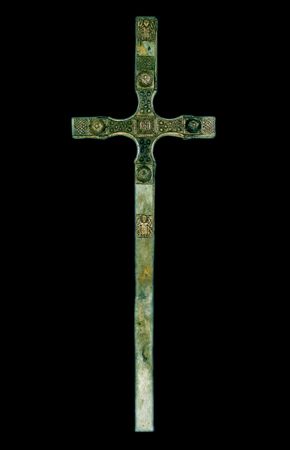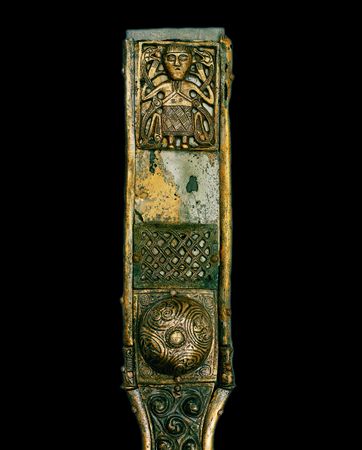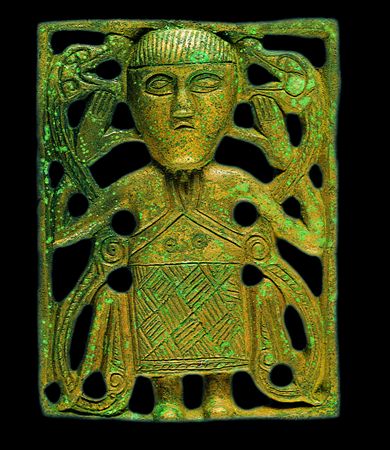| Back |
The Tully
Lough Cross.
© National Museum of
Ireland
 |
|
Tully Lough Cross
The cross arms are cusped and decorated with bosses and panels, some of
them openwork; the ornament is characteristic of Insular art of the late
8th-early 9th centuries (Photo courtesy of the National Museum of
Ireland)
|


The Tully Lough Cross is an Irish altar cross of the 8th or 9th
century. Constructed of metal sheets on a wooden core, it is a rare
example of a metal-encased cross of the period and the only relatively intact
Irish example, although what may be components for similar Irish crosses of the
period have been found elsewhere in Ireland, England and in Viking graves in
Western Norway. It is similar in form to the later
Cross of Cong, which dates to the 12th
century and which also has Co. Roscommon connections through its maker Mael Isu
UaEchan, Abbott of Clooncraft. The only contemporary intact cross of comparable
form is the 8th-century Anglo-Saxon example preserved at Bischofshofen in
Austria, while the fragmentary remains of a bossed metal and wood cross of the
8th century from Dumfriesshire, Scotland, is in the National Museum of Scotland.
This page was last updated on:
13 September 2005
e-mail: admin@cushnieent.force9.co.uk
© 2005 Cushnie Enterprises